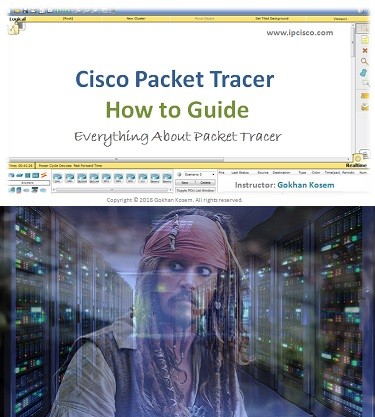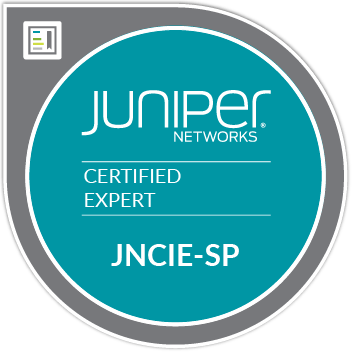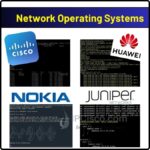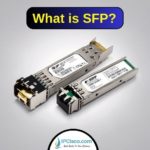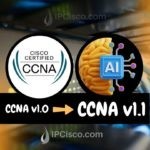CCIE Enterprise Infrastructure is the Expert Certification of Cisco on Enterprise Networks. CCIE one of the most common and valuable Network Certification. It is the most similar certification to old CCIE Routing & Switching. You can also visit Cisco website for detailed information about this certification.
CCIE Enterprise Lab Exam is the last step of Enterprise Infrastructure Certification Path. And CCIE is the most prestigious Expert Certification in Network World!
In CCIE, you learn routing/switching networking concepts, network protocols and troubleshoooting activities detailly and at an Expert Level. Beside, you become an Expert on Cisco Routers and Switches Routing/Switching Configurations.
CCIE Enterprise Certification is two steps away from you. To get your CCIE Cerification on this area, you need to pass;
• 350-401 ENCOR Exam
• CCIE Enterprise Infrastructure v1.0 Lab Exam
Here, different than the other certification exams, CCIE exams divide exam questions into two category. In 350-401 ENCOR Exam, you have only theorical written questions and in CCIE Enterprise Infrastructure v1.0 Lab Exam, you have to solve network problems practically. 350-401 ENCOR Exam is also a required exam for CCNP Enterprise. You do not need to pass CCNA Exam anymore before having these exams. With only two steps, you can be a CCIE.
To Pass CCIE Exams at the First Attempt and Not To Lose Time , You Can Take Our CCIE Courses!
Core Exam (350-401 ENCOR Exam) Lessons are explained in the CCNP Enterprise ENCOR Page. Below, you can find CCIE Lab Course Content.
CCIE Enterprise Infrastructure Lab Course Content :
- Switch Administration
- Layer 2 Protocols
- VLANs
- EtherChannel
- Spanning Tree Protocols
- Routing Concepts
- EIGRP Details
- OSPFv2 and OSPfv3 Details
- Route Redistribution
- BFD
- BGP Details
- IGMPv2, IGMPv3, MLD
- PIM
- Cisco SD Access
- Cisco SD-WAN
- MPLS
- Layer 3 VPN
- DMVPN
- Switch Security
- Router Security
- IPv6 Infrastructure Security
- System Management
- Quality of Service
- HSRP, GLBP, VRRP
- DHCP
- NAT
- IP SLA
- Traffic Capturing
- IOS-XE Troubleshooting
- Automation and Scripting
- Network Programmability
Modules
IPv6
Lessons
AAA
Lessons
Access-Lists (ACLs)
Lessons
OSPF
Lessons
- OSPF Virtual-Link Configuration On Packet Tracer
- OSPF SPF and Cost
- OSPF Overview
- OSPF Adjacency Mechanims
- OSPF Packet Types
- OSPF LSA Types
- OSPF Area Types
- OSPF Network Types
- OSPF Miscellenaous
- Single Area OSPF Configuration on Cisco IOS
- OSPFv3
- OSPFv3 Configuration on Cisco IOS
- OSPF Standard Area and Backbone Area
- OSPF External Routes
- OSPF Stub Area and Totally-Stub Area
- OSPF NSSA and Totally NSSA
Link Aggregation
Lessons
VLANs
Lessons
RIP
Lessons
Neighbor Discovery
Lessons
Routing Fundamentals
Lessons
EIGRP
Lessons
Inter VLAN Routing
Lessons
WAN
Lessons
First Hop Redundancy
Lessons
BGP
Lessons
- Cisco BGP Route Reflector Config on GNS3
- BGP Confederation
- BGP Route Reflector
- BGP Community
- Path Attributes: MED
- Path Attributes: Origin
- Path Attributes: AS Path
- Path Attributes : Local Preference
- Path Attributes: Weight
- BGP Next Hop Self
- BGP Configuration Example
- BGP Path Attributes
- IBGP versus EBGP
- BGP Peers, BGP Sessions and BGP Messages
- BGP
IS-IS
Lessons
SNMP
Lessons
Private VLANs
Lessons
DHCP
Lessons
ARP
Lessons
TCP
Lessons
UDP
Lessons
Switch Security
Lessons
VTP, GVRP, MVRP
Lessons
STP
Lessons
- PVST+ and Rapid PVST+Configuration on Packet Tracer
- PVST+ and Rapid PVST+
- MST (Multiple Spanning Tree)
- MST Configuration on Cisco
- Portfast, Root Guard, BPDU Filter and BPDU Guard
- Loop Guard, Uplink Fast, Backbone Fast and UDLD
- RSTP
- STP Operation
- STP Configuration Example
- RSTP Configuration Example
- STP Portfast Configuration Example
- STP
SDN
Lessons
IGMP and MLD
Lessons
Multicast
Lessons
QoS
Lessons
MPLS
Lessons
LDP and RSVP
Lessons
IPv4 and IPv6
Lessons
Traffic Capture
Lessons
Cisco SD-WAN
Lessons
Network Security
Lessons
Network Time Protocol
Lessons
Route Redistribution
Lessons
Other Lessons
VPN Types and Protocols of VPN

Configuration Register

What is Configuration Register? Configuration Register is a special 16 bits value that can be configured in Cisco routers. It is mainly used in three cases; To determine how the …
Ethernet Collisions and Troubleshooting

Troubleshooting Ethernet Collisions, Speed, Duplex Mismatch Ethernet Collisions are very improtant in networking. It is also importanat for CCNA, CCNP and CCIE Certification Exams. In this lesson, we will focus …



